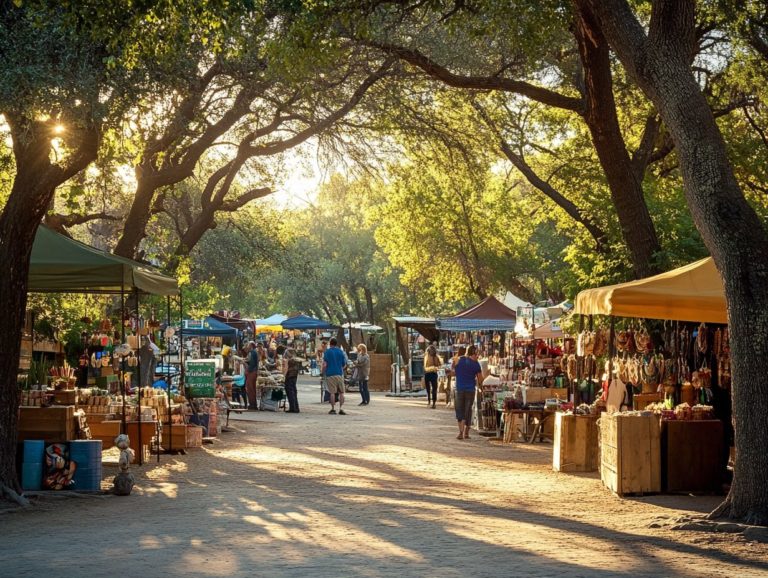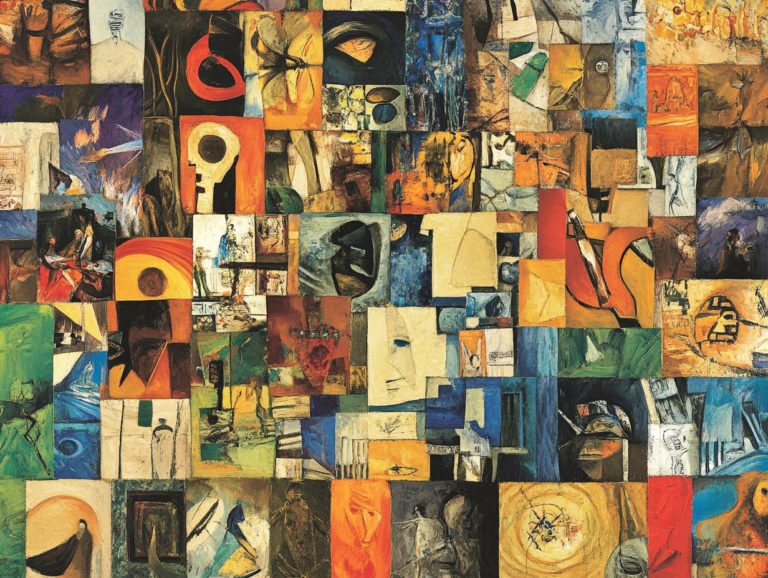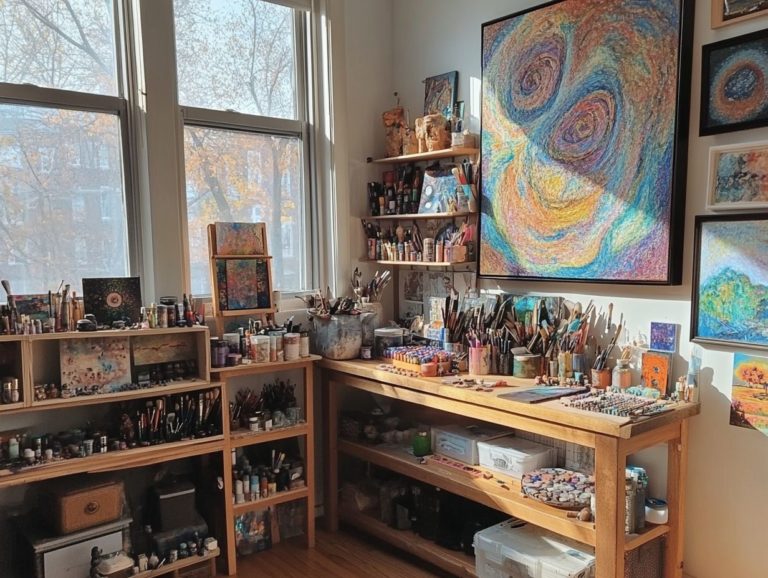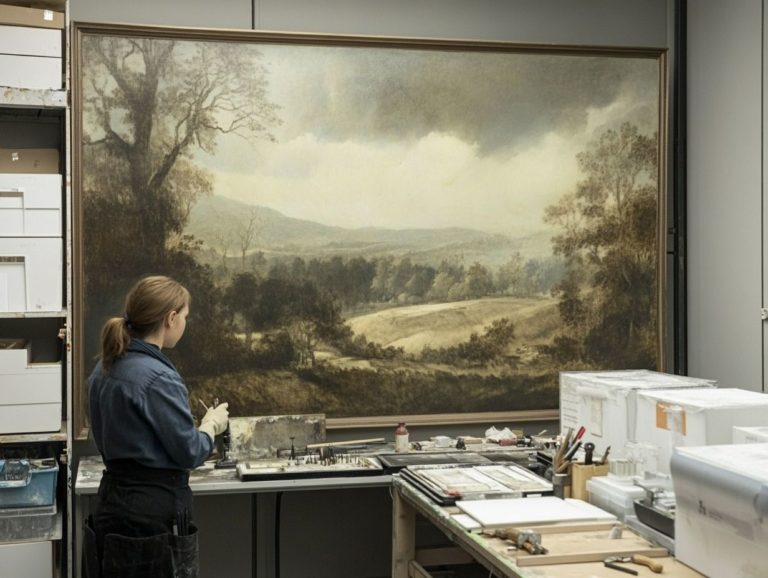Famous Collectors and Their Strategies
Collecting is more than just a hobby; it s a captivating pursuit that offers a glimpse into history, culture, and your personal identity.
This article invites you to explore the intriguing world of collecting, showcasing remarkable collectors and their extraordinary collections. You ll discover effective strategies for curating your own collection while addressing common challenges collectors face and how to navigate them skillfully.
The article also looks at the broader impact of collecting on society and culture, revealing its enriching yet complex aspects. Whether you re a seasoned collector or just starting your journey, there s something here for you!
Contents
- Key Takeaways:
- Famous Collectors and Their Collections
- Strategies for Successful Collecting
- Challenges and Pitfalls of Collecting
- Impact of Collecting on Society and Culture
- Frequently Asked Questions
- Who are some famous collectors and what are their strategies for building their collections?
- How did Peggy Guggenheim approach collecting art?
- What was Henry Clay Frick’s approach to collecting?
- How did J. Paul Getty amass his collection of ancient artifacts?
- What are some common strategies used by famous collectors to increase the value of their collections?
- How can learning about famous collectors and their strategies benefit aspiring collectors?
Key Takeaways:
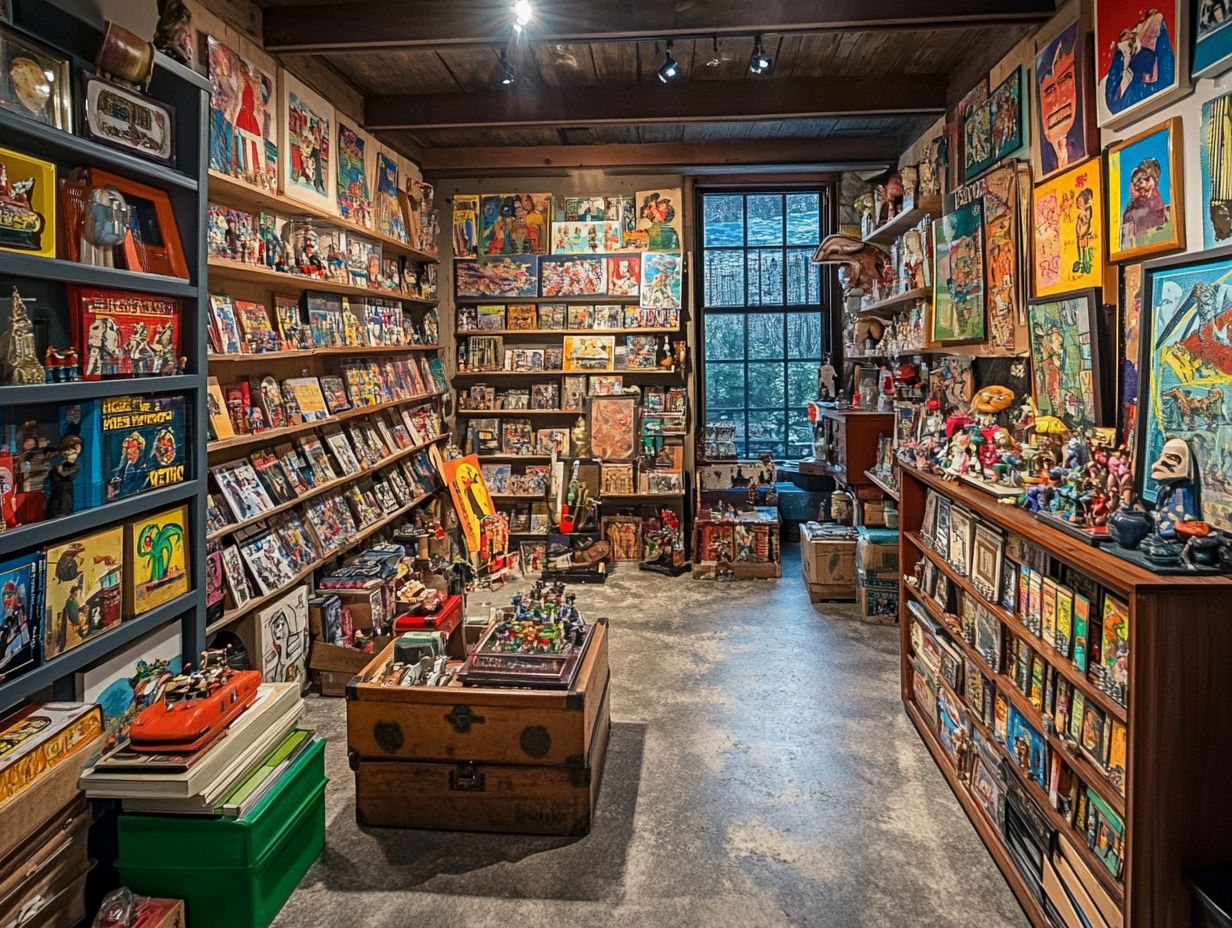
Collecting is an exciting passion that many famous people have embraced throughout history, ranging from art and antiques to unusual items.
Successful collectors use various strategies like setting a budget, networking, and learning about the market.
While collecting brings joy and cultural significance, it can also present challenges like overspending and contributing to the market for stolen items.
What is Collecting?
Collecting is your passionate pursuit of acquiring artworks, from iconic masterpieces to contemporary creations. It reflects your personal taste while carrying cultural significance and economic potential.
Throughout history, collectors have played a pivotal role in the evolution of artistic movements. Think of the people who supported artists financially during the Renaissance and the bustling market for contemporary innovations today.
Esteemed collectors have historically propelled the appreciation of various art styles, allowing movements like Impressionism and Surrealism to flourish.
Your keen eye can set trends in the market, transforming art into a viable investment strategy that enhances your collection while enriching cultural dialogue.
As you navigate places where art is sold to the highest bidder and art fairs, your decisions shape the landscape of ownership. Collecting art is a dynamic intersection of passion, strategy, and cultural heritage.
Famous Collectors and Their Collections
Famous collectors have significantly influenced the art world, creating a lasting legacy through their remarkable collections. These collections often showcase notable pieces from various art movements, including contemporary works and European masterpieces.
Consider the Medici Family, whose support of Renaissance art laid the groundwork for artistic flourishing, or modern-day collectors like Steven Cohen, who continue to shape the art landscape today.
These influential figures have not only gathered valuable artworks but also enriched society’s cultural fabric, highlighting the profound impact art can have on our collective experience.
Overview of Notable Collectors
Notable collectors such as the Medici Family and Catherine the Great have profoundly shaped art history with their extensive collections, which span multiple art movements and eras, from the Renaissance to modern art.
Their passion for art and smart acquisitions inspired generations and enriched our understanding of art patronage and its cultural ramifications. These influential figures didn t just collect remarkable treasures; they also influenced the course of artistic development during their times.
Take the Medici, for instance they nurtured Renaissance luminaries like Michelangelo and Botticelli, who thrived under their support. Similarly, Catherine the Great, with her impressive acquisitions of European masterpieces, transformed the Hermitage into one of the world s leading art museums, embodying her vision of cultural enlightenment.
Their legacies live on, illustrating how collectors can elevate the status of art within society and foster a lasting dialogue between the past and present.
Strategies for Successful Collecting
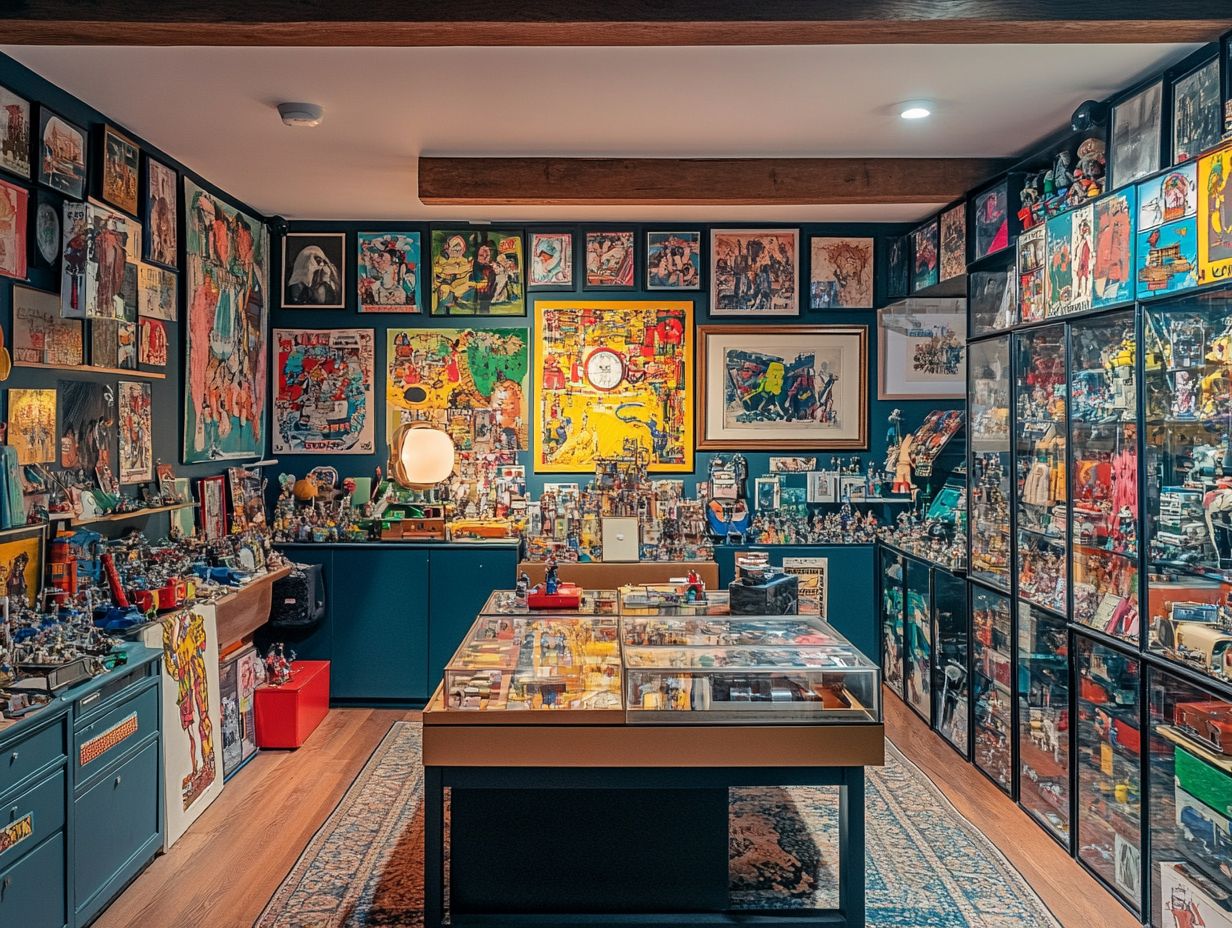
Successful collecting requires a solid strategy. This means understanding current art trends and making informed investments.
Engaging with the art community is crucial. Attend exhibitions and auctions to enhance your market navigation skills.
Tips and Techniques for Building a Collection
Building a diverse art collection involves effective strategies. Conduct thorough research on artworks and understand the art market.
Participate actively in auction houses and galleries to uncover valuable pieces.
Recognize the significance of networking within the art community. This can provide vital insights and recommendations.
Consider exploring various online platforms that offer access to galleries and artists worldwide. Attend local art events and join collector clubs for meaningful connections.
When evaluating artworks, go beyond the history of the artwork and price. Delve into the artist s trajectory and market trends for deeper insights.
Collaborating with knowledgeable gallery owners can lead to fruitful relationships. This grants you access to exclusive offerings and pre-sale opportunities.
Nurturing connections and staying informed about the art world will help you make better acquisition decisions.
Challenges and Pitfalls of Collecting
Navigating the art world can pose significant challenges for collectors. Understanding the complexities of art investment and the changing market is essential.
You need to focus on authenticating artworks and ensuring proper preservation techniques. Vigilance is key to overcoming obstacles that may affect your investments.
Common Obstacles and How to Overcome Them
As an art collector, you face common obstacles like authentication, valuation, and market accessibility. These elements can complicate your investment decisions.
Educate yourself on current art market trends. Consult with experts and build a network of trustworthy sources.
The rise of fakes and forgeries is a significant threat. Engage with reputable appraisers and utilize advanced verification techniques.
Market volatility can introduce uncertainty. Stay informed about economic indicators and emerging artists for a competitive edge.
Prioritizing art preservation methods protects your valuable pieces. This enhances their longevity and market value.
Developing sound decision-making skills and leveraging community knowledge will help you navigate these obstacles effectively.
Impact of Collecting on Society and Culture

The act of collecting profoundly influences society and culture. It shapes visual narratives and transforms the appreciation of art.
Engaging in curated art exhibitions and public installations preserves significant works and enriches the art community.
This fosters cultural dialogue and cultivates a deeper appreciation for diverse forms of artistic expression.
Start your collecting journey today and explore the myriad possibilities in the art world!
Positive and Negative Effects
Collecting can profoundly impact the art community, offering both benefits and drawbacks. It preserves historical collections that enhance cultural heritage, but it can also raise concerns about exclusivity and commercialization.
By prioritizing public access and engagement in your collecting practices, you ensure that your art legacy serves a greater societal purpose.
When you actively engage with your community, you transform your private treasures into shared experiences. This deepens public appreciation for art’s historical and cultural significance and creates a vibrant space for diverse voices to thrive!
Conversely, when collections remain locked away in private hands, they can create an exclusive atmosphere that stifles artistic dialogue and limits access.
As the art community navigates these complexities, embracing transparency and collaboration becomes essential. This approach promotes a broader appreciation of art and addresses challenges in an increasingly commercialized collecting landscape.
Frequently Asked Questions
Who are some famous collectors and what are their strategies for building their collections?
Famous collectors use various strategies to build their collections, including research, networking, and careful selection of pieces that align with their personal interests. For those looking to dive deeper into this world, exploring the art of collecting: balancing passion and profit can provide valuable insights. Some notable figures include Peggy Guggenheim, Henry Clay Frick, and J. Paul Getty.
How did Peggy Guggenheim approach collecting art?
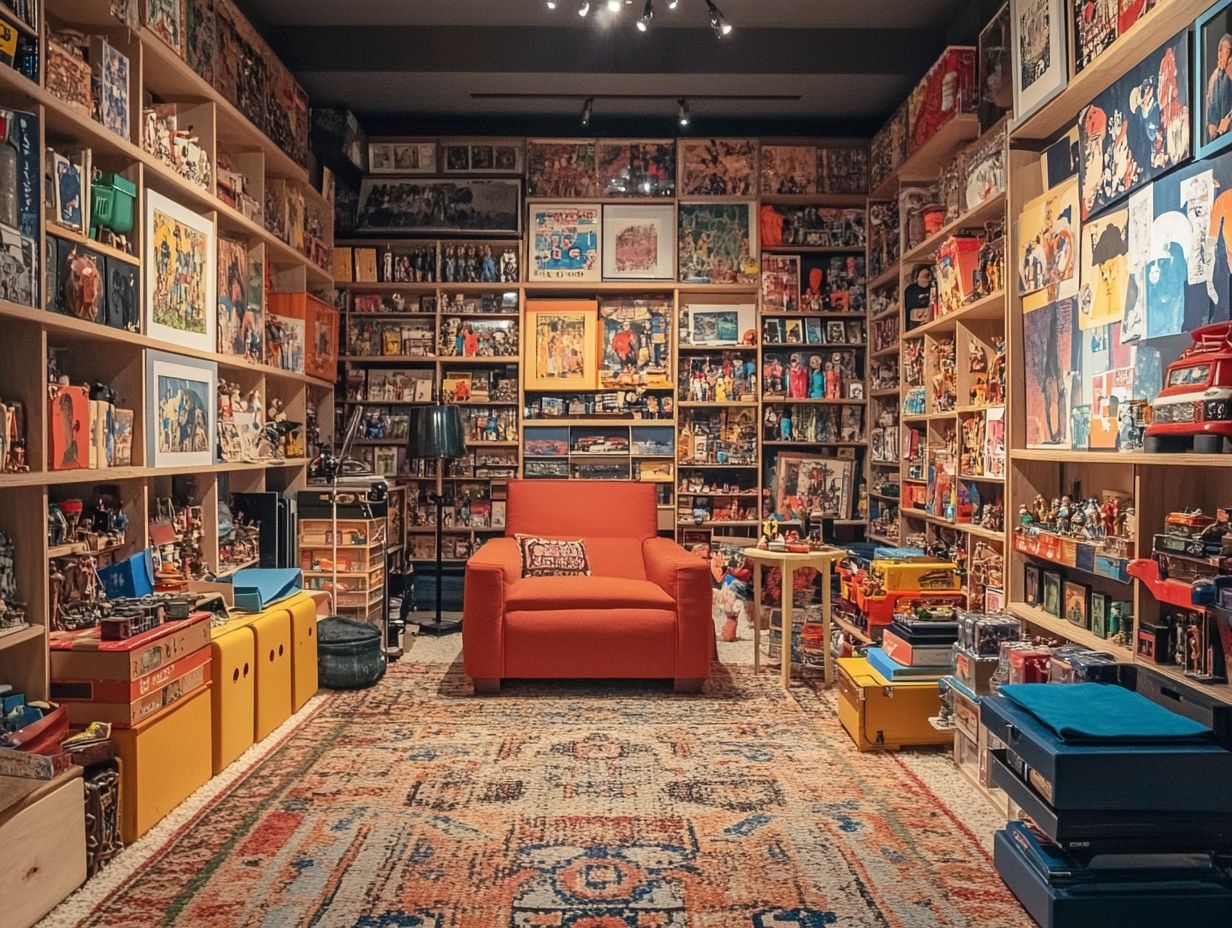
Peggy Guggenheim was a prominent art collector who focused on promoting and supporting modern art, particularly Surrealism and Abstract Expressionism. She used her extensive knowledge and personal relationships with artists to build a unique and impressive collection.
What was Henry Clay Frick’s approach to collecting?
Henry Clay Frick, a successful industrialist and art collector, had a keen eye for quality and value. He often acquired entire collections or significant pieces from other collectors and commissioned new works from artists he admired.
How did J. Paul Getty amass his collection of ancient artifacts?
J. Paul Getty was a collector of ancient artifacts, especially Greek and Roman art. He used his vast wealth to purchase entire collections and had a team of experts to help identify and acquire rare, valuable pieces.
What are some common strategies used by famous collectors to increase the value of their collections?
Famous collectors often loan their pieces for exhibitions, carefully document and preserve their collections, and strategically sell pieces at auction to generate buzz and drive up prices. They also invest in storage and insurance to protect their valuable collections.
How can learning about famous collectors and their strategies benefit aspiring collectors?
Studying the habits of successful collectors offers valuable insights and inspiration for those looking to build their own collections. By understanding their approaches, aspiring collectors can make informed decisions, build connections in the art world, and create a collection that reflects their personal interests and tastes.
Explore art collections or start your own journey in the art world!



